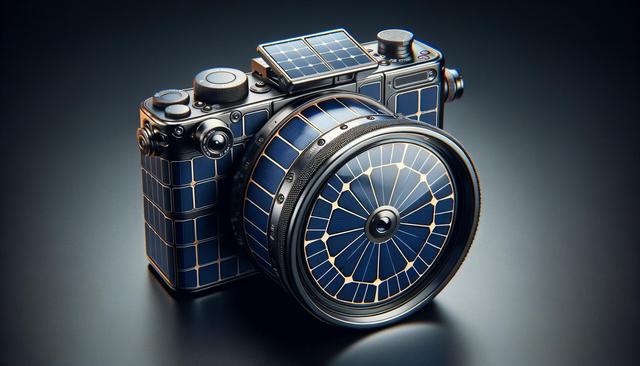How Solar Cameras Work
Solar cameras combine traditional surveillance technology with renewable energy. At the core is a solar panel that captures sunlight and converts it into electrical energy, which is then stored in rechargeable batteries. This setup allows the camera to operate independently of wired power sources. Most models come equipped with motion sensors, night vision, and wireless connectivity, making them suitable for outdoor environments where cabling is inconvenient or impossible.
The technology behind these devices has evolved significantly in recent years. Advances in battery life and solar panel efficiency have made it possible for solar cameras to function in various weather conditions and during shorter daylight hours. Additionally, built-in storage or cloud backup options allow users to access footage remotely, ensuring peace of mind even when away from home.
Advantages of Going Wire-Free
One of the most attractive features of a solar camera is the complete absence of wires. This not only simplifies installation but also reduces long-term maintenance. Traditional security systems often require drilling, trenching, or running cables through walls—all of which can be costly and time-consuming. With solar-powered options, setup can often be completed in under an hour.
Key benefits include:
- Energy efficiency: Utilizes renewable solar energy, reducing utility costs.
- Remote access: Monitor your property from anywhere via a mobile app or browser.
- Scalability: Easily add more units without worrying about power outlets.
- Low maintenance: Fewer moving parts mean fewer chances for technical issues.
These benefits make solar cameras particularly appealing for homeowners, farmers, and those managing remote properties where traditional infrastructure may be lacking.
24/7 Monitoring Without Compromise
Despite being powered by the sun, solar cameras are designed to work around the clock. During the day, solar panels charge the internal battery, which then powers the camera through the night. Many models are equipped with infrared night vision, motion detection alerts, and even spotlight features for added visibility in complete darkness.
When the camera detects movement, it can send real-time notifications to your smartphone, allowing for immediate action. Whether it’s a trespasser, a delivery, or wildlife wandering onto your property, you’ll be informed instantly. Some systems even allow for two-way communication through built-in microphones and speakers, offering an additional layer of interactivity and security.
These features ensure that you’re not sacrificing performance for the convenience of solar power. In fact, the combination of autonomy and modern tech makes these cameras a reliable option for continuous monitoring.
Ideal Locations for Solar Cameras
Solar cameras are especially practical in locations where traditional power sources or Wi-Fi networks are limited or unavailable. They are commonly used in:
- Rural homes and farms: Monitor livestock, equipment, and perimeters without extensive wiring.
- Construction sites: Keep an eye on tools and materials, even when workers are offsite.
- Vacation homes: Maintain visibility and control even when you’re miles away.
- Driveways and entrances: Deter intruders and monitor activity with minimal installation effort.
Some models come with cellular connectivity, allowing them to transmit data even where no Wi-Fi is available. This is particularly useful for surveillance in isolated areas, offering flexibility that traditional systems can’t match. Additionally, portable units can be relocated as needed, making them a versatile solution for temporary setups.
Considerations Before Buying
While solar cameras offer many advantages, there are some factors to consider before making a purchase. First, evaluate the amount of sunlight the intended installation area receives. Shaded areas or regions with limited sunlight during winter may impact performance. Placement is crucial for optimal solar charging and camera coverage.
Other aspects to think about include:
- Battery capacity: Larger batteries provide longer operational times during periods of low sunlight.
- Storage options: Choose between local SD storage or cloud-based services depending on your access needs.
- Weather resistance: Ensure the camera is rated for outdoor use, especially in extreme conditions.
- Connectivity: Some models require Wi-Fi, while others operate via cellular networks.
Taking the time to assess these elements will help you choose a camera that aligns with your specific requirements, ensuring reliable performance year-round.
Conclusion: A Practical Choice for Modern Security
Solar cameras offer an effective, low-maintenance way to improve security without the complications of traditional wired systems. Their ability to function autonomously, even in remote or off-grid locations, makes them a valuable tool for a wide range of users—from homeowners to farmers and property managers. With features like real-time alerts, night vision, and wireless access, they provide peace of mind through modern, sustainable technology. If you’re looking for a practical, eco-friendly solution to keep your property secure, a solar-powered camera system is certainly worth considering.







